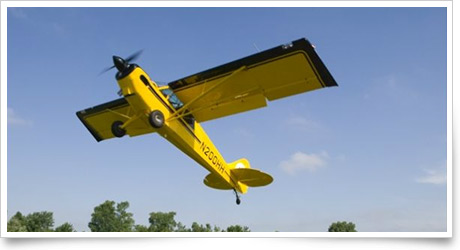| The following stories from the Mar. 02, 2012, edition of AOPA ePilot were provided to AOPA members who expressed an interest in the particular subject areas. Any AOPA member can receive information tailored to their areas of interest by updating their preferences online. |
training tipsMushing, then rushing Recovery from such a stealthy stall can be made more complicated, as occasional accident reports show, if the pilot rushes through the steps or doesn't clearly understand what must be done, and why. The particulars vary by aircraft, but in a typical trainer's stall recovery, the first step is to lower the angle of attack (AOA) to regain smooth flow of air over control surfaces, bringing back control responsiveness. Next, “maximum allowable” power is added, and wings are leveled. In training or on a practical test, completion of the maneuver involves resuming straight-and-level flight “with a minimum loss of altitude appropriate for the airplane.” When practiced stall recoveries don’t quite measure up, a common cause is failing to give step one—lowering the AOA—enough respect and giving step two—adding power—too much. The result can be a prolonged recovery with excessive altitude loss, or a surprise secondary stall. Reasons for the faulty technique can include anxiety about getting through the maneuver, or an incorrect idea about the role each step plays in the recovery. Remember: It is lowering the AOA, not adding power, that breaks the stall. A way to dispel any misunderstanding about that is to practice recoveries from stalls without using power. Starting at a generously safe entry altitude, perform a clearing turn and a normal stall entry. After lowering the AOA to initiate the recovery, continue to accelerate in the glide until reaching an airspeed at which control is fully regained. Note the pitch attitude, how much time it takes to regain control effectiveness, and altitude lost. Then add power and resume normal cruise flight. Not only will your next conventional stall recovery using power be smoother—and be more instinctive—after some power-off recovery practice, but you also will have acquired a better appreciation of how much altitude loss is avoided when using power as recommended, and perhaps decide that a maneuver you once found stressful is actually fun and a confidence builder. For more insights into angle of attack, see this Webinar from the Air Safety Institute. training productsPractical Test Standards eBooks from ASAWant to keep those all-important practical test standards within reach? ASA offers the pertinent PTS for many certificates and ratings in eBook format. For example, you can purchase the Sport Pilot, Private Pilot Airplane (Single-Engine Land), Instrument (Airline, Helicopter, and Powered Lift), or Commercial Pilot (Single or Multiengine Land) PTS. Each is $4.95. For more information, see the website or call 800/272-2359 (800/ASA2FLY).
Note: Products listed have not been evaluated by ePilot editors unless otherwise noted. AOPA assumes no responsibility for products or services listed or for claims or actions by manufacturers or vendors. final examQuestion: When navigating to a VOR/DME station, how do I know if both the VOR and DME systems are working properly?
Answer: When a DME (distance measuring equipment) is co-located with a VOR (VHF omnidirectional radio range navaid), the specific DME frequency is paired with the VOR frequency so you only have to dial in one frequency, reducing the risk of errors. Both the VOR and DME have the same Morse code for identification, but they are broadcast at different intervals and with different tones. A VOR is working properly if you hear the Morse code every 10 seconds modulated at 1020 Hz. The DME code can be heard every 30 seconds and modulated at 1350 Hz. If you notice a gap in the broadcast and only hear a single code every 30 seconds, the DME is working properly, but the VOR is not. Be sure to check all notices to airmen (notams) with flight service before any flight so you are aware of any navigational aids that may be out of service. For additional information on utilizing your airplane’s navigation equipment, visit AOPA Online. CORRECTION: The Feb. 24 Final Exam on military training routes incorrectly referred to obtaining Department of Defense Flight Information Publication (FLIP) charts. They are no longer available to the public. AOPA regrets the error.
Got a question for our technical services staff? E-mail [email protected] or call the Pilot Information Center, 800/872-2672. Don’t forget the online archive of “Final Exam” questions and answers, searchable by keyword or topic. |
 The Feb. 24
The Feb. 24 

